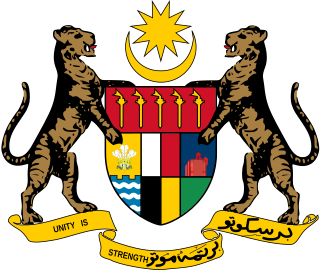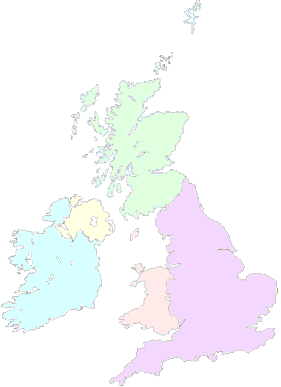
Singapore, officially the Republic of Singapore, is an island country and city-state in maritime Southeast Asia. It is located about one degree of latitude north of the equator, off the southern tip of the Malay Peninsula, bordering the Strait of Malacca to the west, the Singapore Strait to the south, the South China Sea to the east, and the Straits of Johor to the north. The country's territory comprises one main island, 63 satellite islands and islets, and one outlying islet; the combined area of these has increased by approximately 25% since the country's independence as a result of extensive land reclamation projects. It has the second highest population density of any country in the world, although there are numerous green and recreational spaces as a result of urban planning. With a multicultural population and in recognition of the cultural identities of the major ethnic groups within the nation, Singapore has four official languages: English, Malay, Mandarin, and Tamil. English is the lingua franca, with its exclusive use in numerous public services. Multi-racialism is enshrined in the constitution and continues to shape national policies in education, housing, and politics.

As of June 2021, the population of Singapore stands at 5.45 million. Of these 5.45 million people, 4 million are residents, consisting of 3.5 million citizens and 500,000 permanent residents (PRs). The remaining 1.45 million people living in Singapore are classed as non-residents, a group consisting mainly of foreign students and individuals on work passes.
Singapore English is the set of varieties of the English language native to Singapore and Malaysia. In Singapore, English is spoken in two main forms: Singaporean Standard English and Singapore Colloquial English.

Chen ( ) is a common Chinese-language surname and one of the most common surnames in Asia. It is the most common surname in Taiwan (2010) and Singapore (2000). Chen is also the most common family name in Guangdong, Zhejiang, Fujian, Macau, and Hong Kong. It is the most common surname in Xiamen, the ancestral hometown of many overseas Hoklo.
Eurasian Singaporeans are Singaporeans of mixed European and Asian descent. Their Asian ancestry trace from Colonial India to other colonies while their European ancestry trace back to western Europe primarily, although Eurasian settlers to Singapore in the 19th century came largely from other European colonies. These included British Malaya and British Sarawak, part of the former British Raj India, of the former Portuguese India and Chittagong, the Dutch East Indies and French Indochina. When the European maritime powers colonised Asian countries, such as Colonial India, Ceylon, Malaya, Singapore, Indonesia and Indochina, from the 16th to 20th centuries, they brought into being a new group of commingled ethnicities known historically as Eurasians.

Chinese Singaporeans are Singaporeans of Han Chinese ancestry. Chinese Singaporeans constitute 75.9% of the Singaporean citizen population according to the official census, making them the largest ethnic group in Singapore.

The Cantonese people or Yue people, are a Yue-speaking ethnic group or Han Chinese subgroup originating from or residing in the provinces of Guangdong and Guangxi, in Southern Mainland China. More accurately, "Cantonese" refers only to people with roots from Guangzhou and its satellite cities and towns, rather than generally referring to the people of the Liangguang region.
Chan is a non-pinyin romanisation of multiple Chinese surnames, based on different varieties of Chinese.

Malaysian nationality law details the conditions by which a person is a national of Malaysia. The primary law governing nationality requirements is the Constitution of Malaysia, which came into force on 27 August 1957.

The history of the modern state of Singapore dates back to its founding in the early 19th century; however, evidence suggests that a significant trading settlement existed on the island in the 14th century. The last ruler of the Kingdom of Singapura, Parameswara, was expelled by the Majapahit or the Siamese before he founded Malacca. Singapore then came under the Malacca Sultanate and subsequently the Johor Sultanate. In 1819, British statesman Stamford Raffles negotiated a treaty whereby Johor would allow the British to locate a trading port on the island, ultimately leading to the establishment of the Crown colony of Singapore in 1867. Important reasons for the rise of Singapore were its nodal position at the tip of the Malay Peninsula flanked by the Pacific and Indian Oceans, the presence of a natural sheltered harbour, as well as its status as a free port.

Singapore, officially the State of Singapore, was one of the 14 states of Malaysia from 1963 to 1965. Malaysia was formed on 16 September 1963 by the merger of the Federation of Malaya with the former British colonies of North Borneo, Sarawak and Singapore. This marked the end of the 144-year British rule in Singapore which began with the founding of modern Singapore by Sir Stamford Raffles in 1819. At the time of merger, it was the smallest state in the country by land area, but the largest by population.

Singaporean nationality law details the conditions by which a person holds Singapore nationality. The primary law governing nationality requirements is the Constitution of Singapore, which came into force on 9 August 1965.
Immigration to Singapore is the process by which people migrate to Singapore for the purpose of residing there—and where a majority go on to become permanent residents and Singaporean citizens. Singapore is an attractive destination especially in the region as it is a country with a strong currency that offers high living standards, including in education, work, wages and safety as well as an overall far higher quality of life compared to its neighbours. High-net-worth or skilled immigrants worldwide are also attracted to Singapore's low tax rates and ease of doing business.
Singaporean Australians are Australians of Singaporean descent. As Singapore is a multi-racial country, a Singaporean Australian could either be of Chinese, Malay or Indian descent, the main races of Singapore. According to the 2006 Australian census, 39,969 Australians were born in Singapore while 4,626 claimed Singaporean ancestry, either alone or with another ancestry.
Singaporean Canadians are Canadians of Singaporean descent. There is a small community of Singaporeans in Canada, consisting largely of expatriate professionals and immigrants from Singapore and their families, as well as international students.

Singaporeans are the citizens and nationals of the sovereign island city-state of Singapore. Singapore is home to a people of a variety of ethno-racial origins, with the city-state itself being a multi-racial, multi-cultural, multi-religious, and multi-lingual country. Singaporeans of Chinese, Malay, Indian and Eurasian descent have made up the overwhelming majority of the population since the 19th century. The Singaporean diaspora is also far-reaching worldwide.

Overseas Singaporeans refers to citizens or people who identify as a nation with the sovereign island city-state of Singapore that are living outside the borders of Singapore. Most Singaporeans overseas are high-income expatriates bringing their expertise or skills to other countries while accompanied by their families or students temporarily studying abroad.
Malaysians in Singapore refers to citizens of Malaysia or Singaporean citizens of Malaysian origin residing in Singapore. According to the United Nations Department of Economic and Social Affairs, the community had a population of 952,261 in 2019, making them the world's largest Malaysian diaspora community. The community is also the largest foreign community in Singapore, constituting 44% of the country's foreign-born population and an additional 350,000 Malaysians cross the Johor–Singapore Causeway daily for work and school in the city-state.










